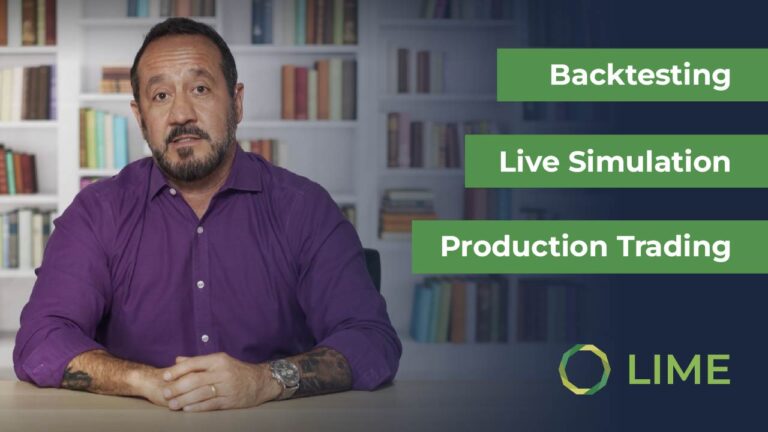Confused by Inflation?
Inflation matters. Every so often the market removes inflation from its radar screen, only for it to violently claim back its place atop the totem pole of market worries. Investors tend to be well acquainted with the benefits of diversification to dampen the effect on most market drivers. However, inflation is a risk that many consider difficult to diversify from.
This wide-ranging effect has both direct and indirect causes. Inflation directly pressures wages, reduces consumers’ purchasing power, and increases manufacturers’ inventory costs. It indirectly affects monetary and fiscal policy — central banks hike rates, which affect equities with higher discount rates, hurting bonds by rising yields and forcing governments to cut spending, slowing GDP growth.
Nevertheless, inflation is a hard read, especially since there are several measures with different constituencies. The most visible – and politically influential – proxies for inflation are gasoline and grocery prices. Albeit non-conventional inflation metrics, they are published everywhere, atop 50ft poles, reminding everybody about the cost of living.
The most conventional inflation metrics are the changes in CPI (Consumer Price Index). CPI is published monthly by the Bureau of Labor Statistics (BLS), measuring the change in the cost of goods and services typically bought by urban consumers in 87 metro areas. It splits the index between “headline”, which includes everything, and “core”, which includes energy and food to smoothen volatility (check https://www.bls.gov/news.release/cpi.toc.htm for related data).
The Fed prefers the PCE (Personal Consumption Expenditures) to guide monetary policy, estimating that it has been a more robust indicator of price trends. The PCE targets people’s actual consumption patterns, rather than a fixed basked like the CPI.
Pro-Inflation, Anti-Inflation, Inflation-Neutral?
Inflationary trends are extremely hard to identify. The most educated, experienced, and smartest players in academia and finance are nearly always split midway between hawks and doves. Broadly speaking, the run-of-the-mill retail investor has about the same chance of predicting the trend as any well-placed economist in DC or Wall Street.
As with most situations we have presented in these series of Newsletters, investors can choose what side of the trade they want to be on. The following are examples of ETF’s; for more information regarding ETFs, go to www.etf.com.
Expecting inflation to go up? Get the mighty dollar through the UUP ETF. This is one of the hardest trades as most asset classes are hurt by inflation. Historically, higher yields and risk reduction attracts investors to the US$ as it gains in high inflationary environments. The Invesco-managed UUP ETF ($2.3b assets under management) tracks the relative value of the US$ vs. a basket of foreign currencies.
Expecting inflation to go down? Long bonds (TLT) and tech (QQQ, IYW). The main effect of declining inflation is a drop in rates, which trickle into lower long-bond (20+ yrs.) yields; the TLT ETF ($25b AUM) tracks a basket of 20+ year treasury bonds. Lower rates disproportionally benefit stocks of growth companies with backloaded cash flows, which abound in the tech sector; the simplest way is to use the Nasdaq-tracking QQQ and US-tech IYW ETF’s ($150b and $8b AUM).
I don’t know what to do! TIP and STIP. Investors may feel unprepared to take a position on inflation. Treasury Inflation Protected Securities (TIPS) adjust their principal value with inflation, so the real value of the investment remains unchanged. The TIP ($25b AUM) and STIP ($12b AUM) offer easy-to-execute exposure to long-term and short-term TIPS.
Investors should consider an ETF investment objective, risks, charges, and expenses carefully before investing. The prospectus, which contains this and other important information, is available from Lime Trading to https://lime.co/disclosure-statements/ and should be read carefully before investing.
What could go wrong with this type of strategy?
Trying to get on the right side of inflation is extremely difficult. Inflation estimates are fallible in the short term and uncertain to a fault in the long run. Investors who want to get directional exposure to inflation should carefully consider the high degree of unpredictability of price trends.
© 2022 Securities are offered by Lime Trading Corp., member FINRA & SIPC, NFA, Lime Advisory Corp is an investment adviser registered with the SEC. and Lime FinTech is a technology business. Collectively known as “Lime Financial” or “Lime” provide various trading, investment advisory services, and technology solutions including web and mobile trading applications, to retail and institutional investors. All investing incurs risk, including but not limited to loss of principal. Further information may be found on our Disclosures Page.
Please read the Options Disclosure Document titled “Characteristics and Risks of Standardized Options” before trading options.
Exchange Traded Funds (ETFs) are subject to market risk, including the loss of principal. The value of any ETF and thus the portfolio that holds an ETF will fluctuate with the value of the underlying securities in the ETF reference basket. ETFs trade with the same brokerage commissions associated with buying and selling equities unless trading occurs in a fee-based account. ETFs often trade for less than their net asset value. Refer to Disclosure Statements | Lime Financial.
Options trading entails significant risk and is not appropriate for all investors. Certain options strategies carry additional risk and investors may lose 100% of funds invested in a short period of time. Investors should consult with a tax advisor as to how taxes may affect the outcome of any options strategy. Options trading privileges are subject to Lime Trading Corp. review and approval. Transaction costs may be significant in multi-leg option strategies, including spreads and straddles, as they involve multiple commission charges.
This material has been prepared for informational purposes only and is NOT intended to provide nor should it be relied on for tax, legal, or accounting advice. Please consult your own tax, legal, and accounting advisors before engaging in any securities transactions as each individual investment(s) may result in diverse/adverse tax implications that will affect the outcome of any investment strategy. No information presented herein should be considered an offer to buy or sell a particular type of security. This is not an offer or solicitation in any jurisdiction where we are not advertised to do business. Other fees, such as regulatory, service, or other fees, may apply. Please visit our Pricing Page for further information. Investments involve risk, past performance does not represent future results. Diversification may help spread risk but does not protect in a down market. You may lose all of your investment. Investors should evaluate their financial situation, investment objectives, and goals before investing. Substantial risks are involved with electronic trading. Day trading involves significant risk and is not suitable for all investors. Please see our Day Trading Risk Disclosure Statement for more detailed information. Trading on margin is not appropriate for every investor. Please see our Margin Disclosure Statement for information on risks. System response may vary due to multiple factors including but not limited to trading volumes, market conditions, system performance, and other factors. Access to electronic services may be limited or unavailable during periods of peak demand, market volatility, systems upgrades, maintenance, or for other reasons.




